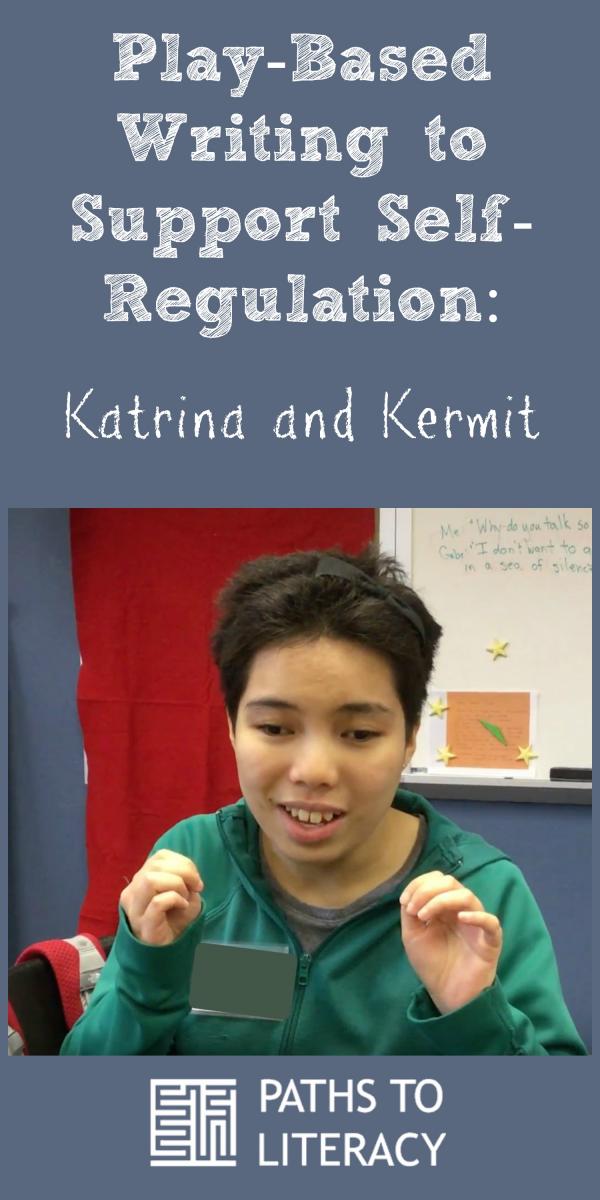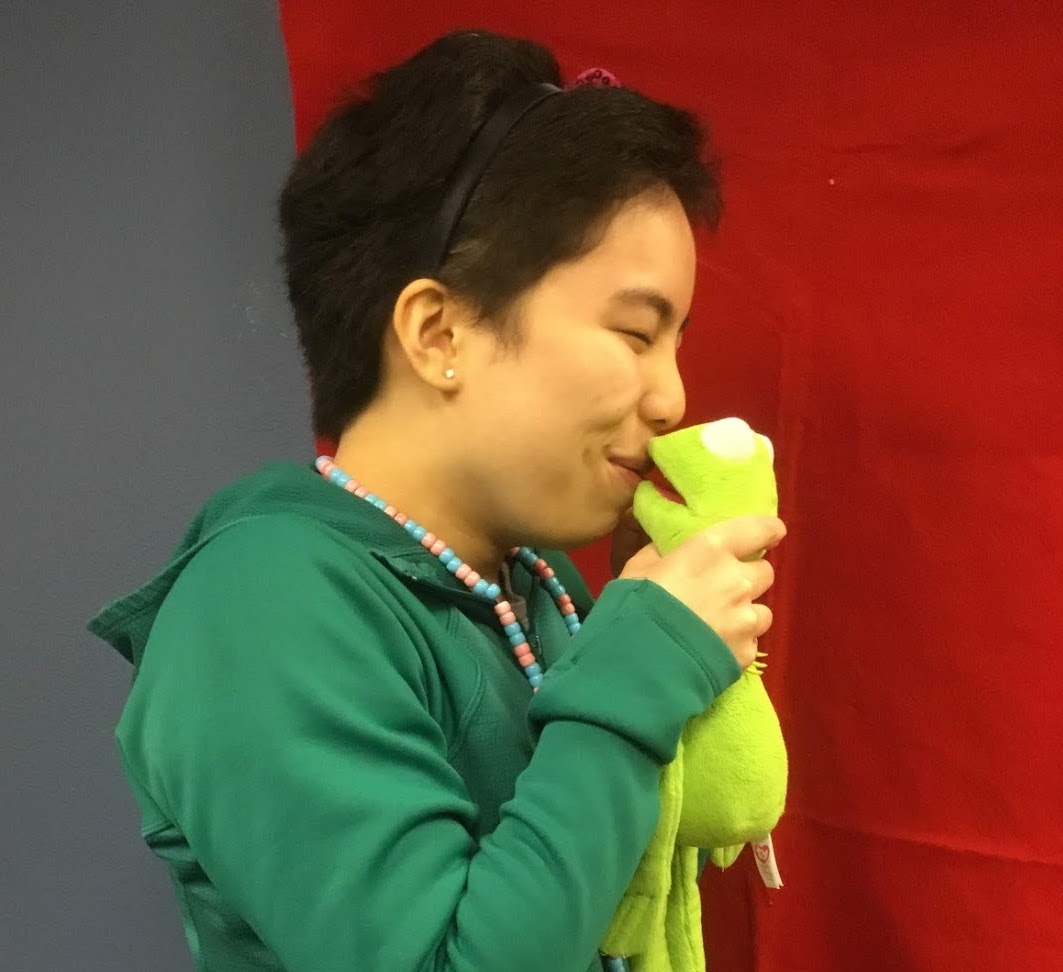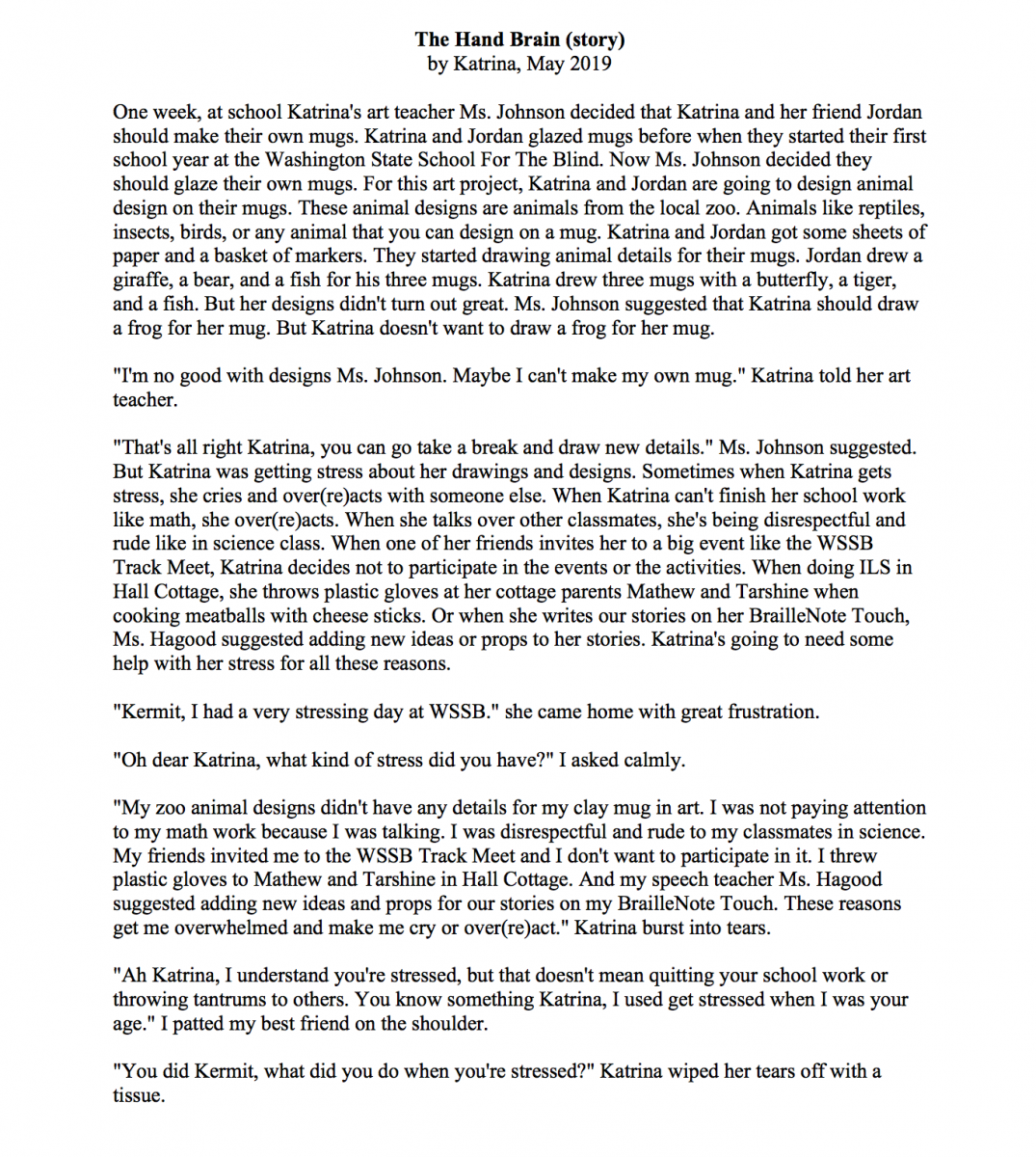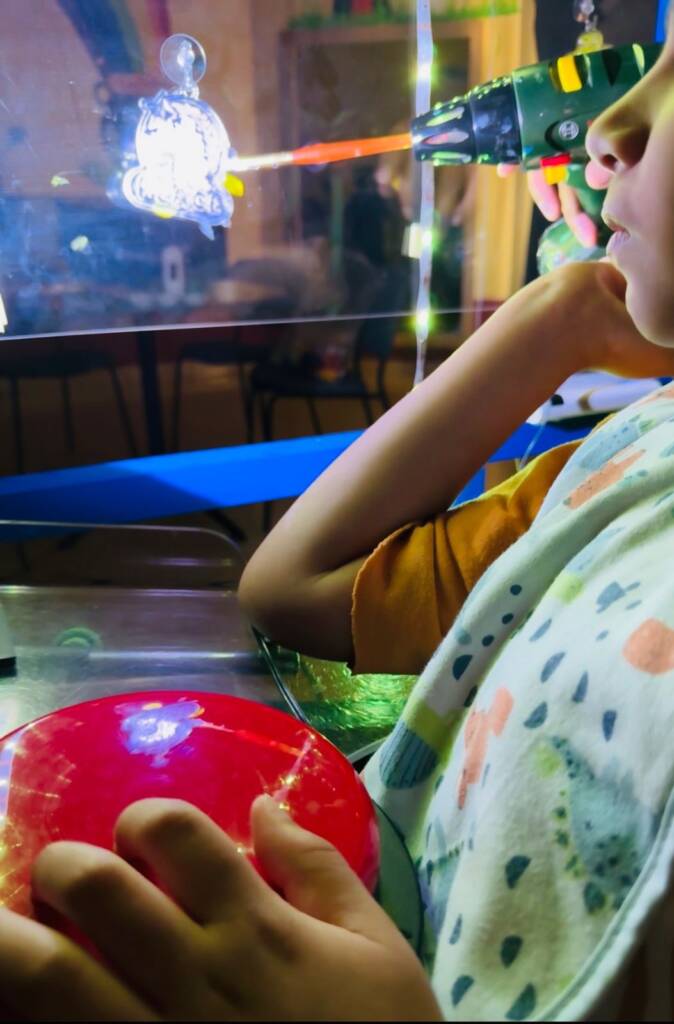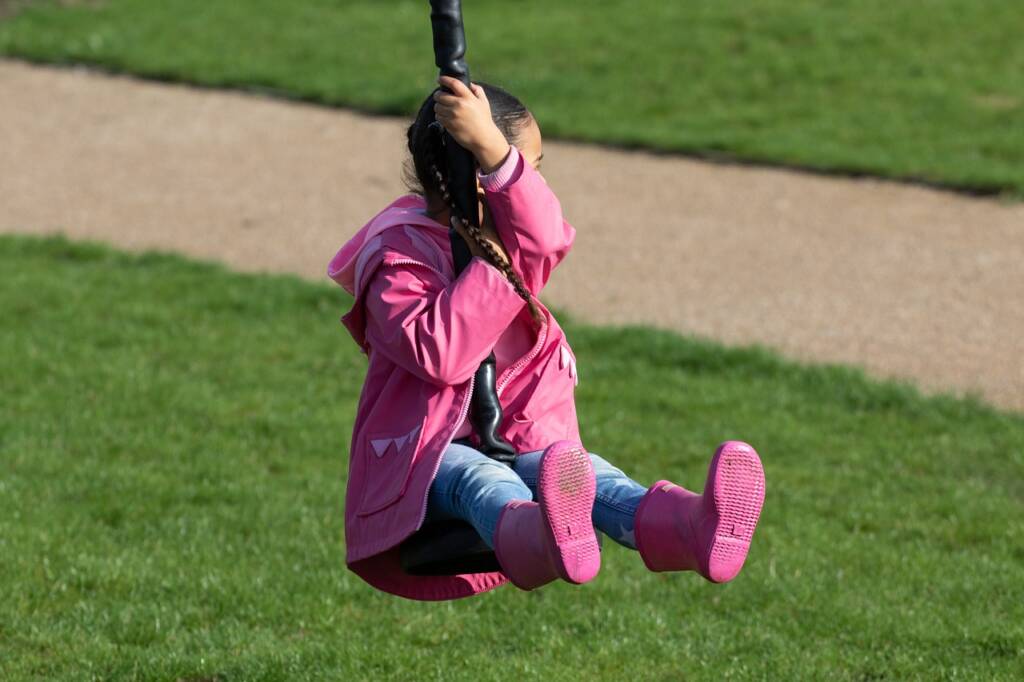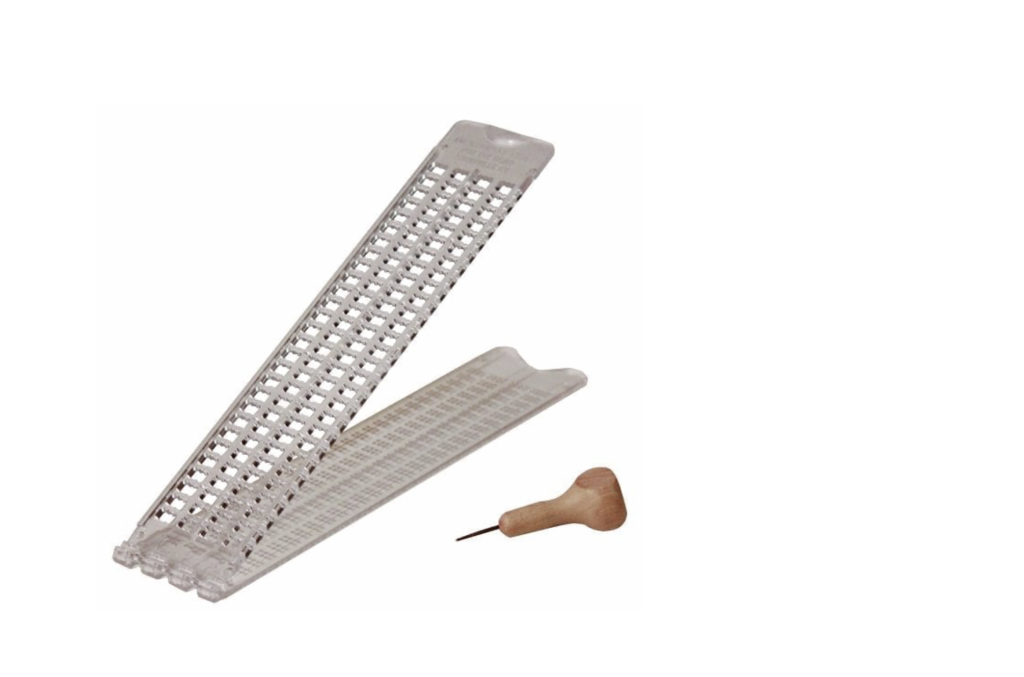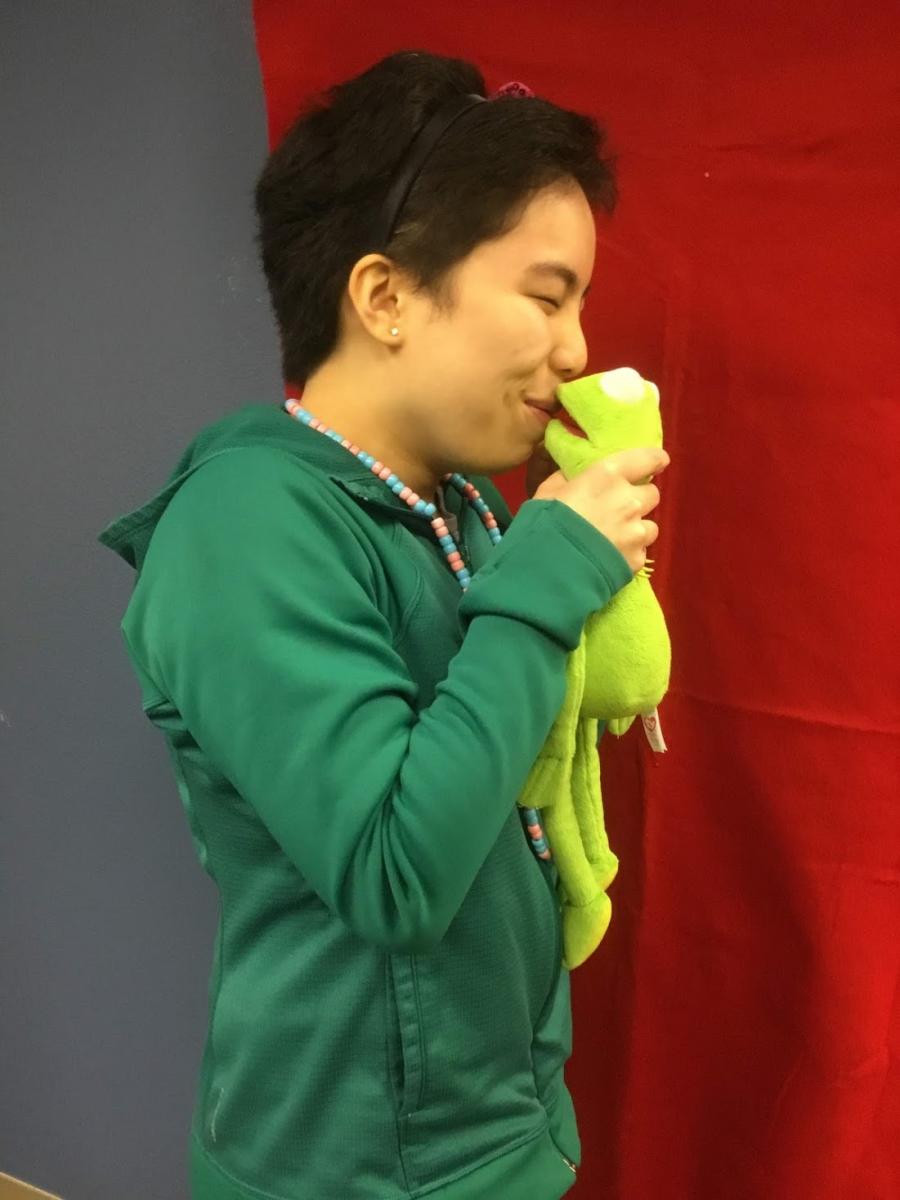 Katrina loves Frogs and Braille. During the past school year, she has become an authority on her favorite frog, Kermit, especially in his Sesame Street role as “News Flash Reporter.” She has created a series of fantasy stories in which she and Kermit are married, following the tumultuous breakup of Kermit and Miss Piggy (who was much too dowdy, aggressive and extroverted for Kermit). She portrays Kermit as a “social coach and spirit guide,” who helps her with a multitude of social and philosophical challenges she encounters as a visually impaired 18 year old with autism. She sees herself as a “caring and empathetic wife and co-reporter,” who helps Kermit to write his news flashes on time, and to stay organized. Several evenings a week, Katrina creates a new chapter in this lengthy book, writing the stories on her BrailleNote Touch and emailing them to me and others who she thinks might be interested. The story-writing has become a great context for supporting Katrina’s social growth, as she has explored topics such as jealousy, sensory overload, interdependence vs. co-dependence, body image issues, and autism (through the voice of Julia, the Sesame Street muppet with autism). Sometimes, she uses the stories to expand upon academic learning, like in a story in which she paralleled her relationship with Kermit to that of Romeo and Juliet. She has also learned to accept suggestions and feedback on her stories, including editing for grammar and story elements. By the end of the school year, Katrina could apply almost any social concept to a new and creative story in which she collaborates with Kermit to deal with the issues that sometimes cause her to have meltdowns or upsets. The charming stories have a great style, and always end happily with Kermit tucking Katrina into bed at night in their Sesame Street apartment, and a summary of the day’s events. She has taken great pleasure in sharing her work with children in an after-school program, and they have illustrated several of her stories. I hope that next school year, she will learn to share these stories more readily with peers and to write collaboratively with them.
Katrina loves Frogs and Braille. During the past school year, she has become an authority on her favorite frog, Kermit, especially in his Sesame Street role as “News Flash Reporter.” She has created a series of fantasy stories in which she and Kermit are married, following the tumultuous breakup of Kermit and Miss Piggy (who was much too dowdy, aggressive and extroverted for Kermit). She portrays Kermit as a “social coach and spirit guide,” who helps her with a multitude of social and philosophical challenges she encounters as a visually impaired 18 year old with autism. She sees herself as a “caring and empathetic wife and co-reporter,” who helps Kermit to write his news flashes on time, and to stay organized. Several evenings a week, Katrina creates a new chapter in this lengthy book, writing the stories on her BrailleNote Touch and emailing them to me and others who she thinks might be interested. The story-writing has become a great context for supporting Katrina’s social growth, as she has explored topics such as jealousy, sensory overload, interdependence vs. co-dependence, body image issues, and autism (through the voice of Julia, the Sesame Street muppet with autism). Sometimes, she uses the stories to expand upon academic learning, like in a story in which she paralleled her relationship with Kermit to that of Romeo and Juliet. She has also learned to accept suggestions and feedback on her stories, including editing for grammar and story elements. By the end of the school year, Katrina could apply almost any social concept to a new and creative story in which she collaborates with Kermit to deal with the issues that sometimes cause her to have meltdowns or upsets. The charming stories have a great style, and always end happily with Kermit tucking Katrina into bed at night in their Sesame Street apartment, and a summary of the day’s events. She has taken great pleasure in sharing her work with children in an after-school program, and they have illustrated several of her stories. I hope that next school year, she will learn to share these stories more readily with peers and to write collaboratively with them.
Introducing the Hand-Brain Rhyme
During a break from the school track meet, which was quite stressful for Katrina, I taught her to use a little rhyme that was developed by another student in our program, based on the “Hand Brain” model developed by neuroscientist Daniel Siegel (https://www.youtube.com/watch?v=gm9CIJ74Oxw). In this model, the thumb and palm of the hand represent the limbic system, with the thumb as the amygdala. The four fingers folding over the thumb represent the frontal cortex that is used to regulate our feelings. The original, student written “rap” that accompanied this had a catchy beat:
(Begin with fisted hand, thumb/amygdala covered with fingers/ cortex)
She liked it right away, and I recorded her rendition of it here.
Using Writing to Work Through Social Challenges and Resolve Problems
The night after I introduced the rhyme to her, she created this story on her BrailleNote. I love the way she has integrated this teaching into real-life applications, and the way that her writing resembles play–a way to work through social challenges and resolve problems. So much more real learning than when I tried to present her with teacher-made social stories. She never needs a prompt to write, is joyful and engaged in the writing process, and is using it to play with words and feelings!
